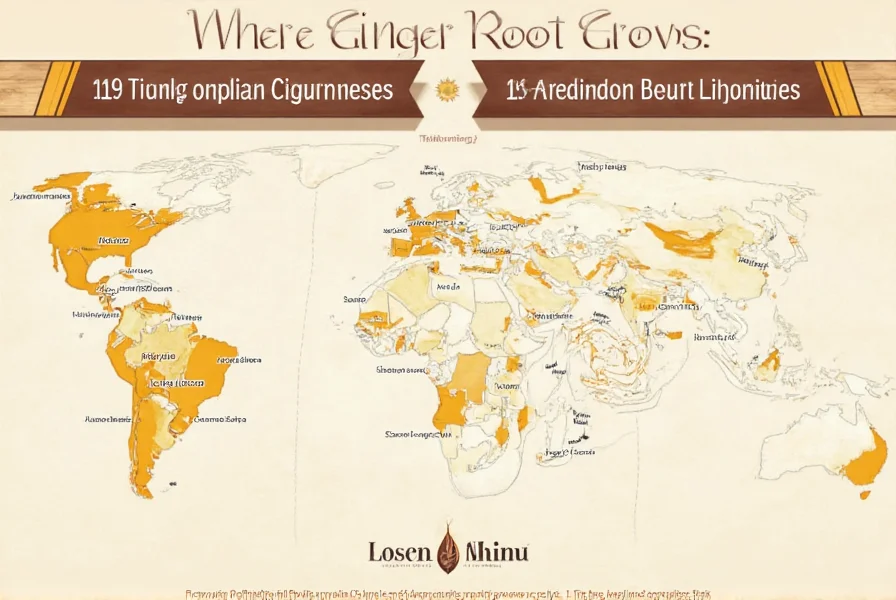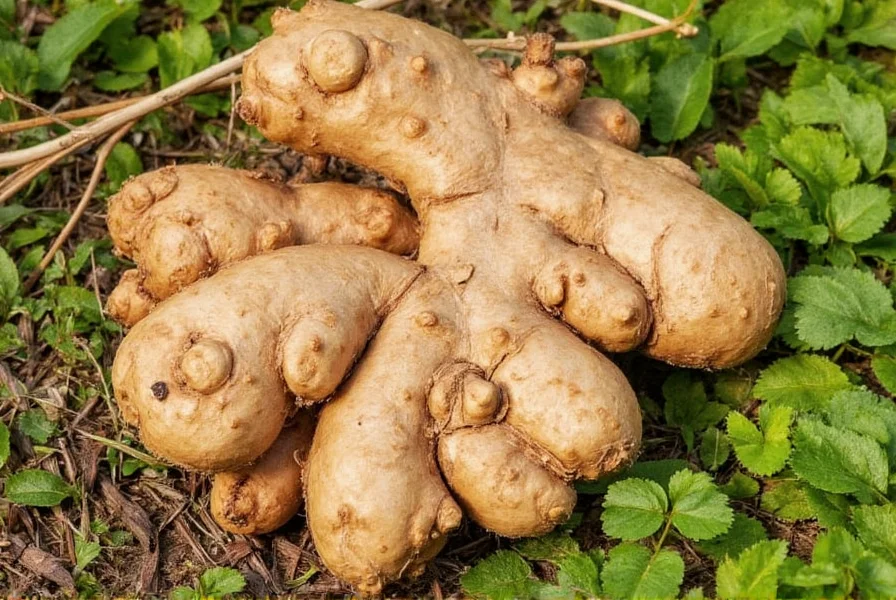Ginger (Zingiber officinale) has been cultivated for thousands of years across diverse geographical regions that share specific climatic requirements. This versatile rhizome thrives in environments with temperatures between 77-86°F (25-30°C), annual rainfall of 60-70 inches, and partial shade conditions that mimic its natural forest understory habitat.
Top Ginger-Producing Countries
Global ginger production is concentrated in specific regions that provide the perfect combination of climate, soil, and agricultural expertise. The following countries represent the world's leading ginger producers:
| Country | Annual Production (Metric Tons) | Notable Growing Regions | Unique Characteristics |
|---|---|---|---|
| India | 1,100,000 | North East states, Kerala, Karnataka | Known for high oleoresin content; Cochin ginger is internationally recognized |
| Nigeria | 650,000 | Plateau, Kaduna, Taraba states | World's largest exporter; Beniseed ginger commands premium prices |
| China | 550,000 | Yunnan, Guangdong, Sichuan provinces | Specializes in preserved and dried ginger products |
| Nepal | 150,000 | Chitwan, Morang, Sunsari districts | Organic ginger farming is increasingly popular |
| Thailand | 120,000 | Chiang Mai, Chiang Rai, Kanchanaburi | Famous for young ginger used in culinary applications |
Climate and Soil Requirements for Ginger Cultivation
Ginger's specific environmental needs explain why it's concentrated in particular regions. Successful ginger farming requires:
- Temperature: Consistent warmth between 77-86°F (25-30°C) during growing season; cannot tolerate frost
- Rainfall: 60-70 inches annually with distinct wet and dry seasons; excessive waterlogging causes rhizome rot
- Soil: Deep, well-drained loamy soil rich in organic matter with pH between 5.5-6.5
- Shade: 30-50% shade coverage mimics natural forest understory conditions where ginger evolved
Regions that successfully grow ginger commercially typically have laterite or alluvial soils that provide excellent drainage while retaining sufficient moisture. The crop requires approximately 8-10 months from planting to harvest, with planting typically occurring at the beginning of the rainy season.

Historical Context of Ginger Cultivation
Ginger originated in the tropical rainforests of Southern Asia, with Southeast Asia considered its evolutionary birthplace. Historical records show ginger cultivation dating back to ancient China and India, where it was valued both culinarily and medicinally.
By the 1st century CE, ginger had spread along trade routes to the Middle East and Mediterranean regions. European demand for ginger increased significantly during the Middle Ages, making it one of the most valuable spices of that era. Today's global distribution reflects centuries of agricultural adaptation as farmers identified suitable regions worldwide for ginger production.
Commercial vs. Home Cultivation
While large-scale commercial ginger farming occurs primarily in tropical regions, home gardeners in temperate climates can successfully grow ginger with proper techniques:
Commercial farming: Typically involves specialized agricultural practices including raised beds for drainage, intercropping with shade-providing plants like fruit trees, and careful post-harvest processing to prevent spoilage. Major producers often focus on specific ginger varieties optimized for their regional conditions.
Home cultivation: Gardeners in non-tropical regions can grow ginger in containers indoors or in shaded garden areas. Starting with fresh ginger rhizomes from the grocery store, planting in rich potting mix, and maintaining consistent moisture can yield small harvests even in temperate climates. The key is providing warm temperatures and protecting plants from direct sunlight.

Emerging Ginger-Growing Regions
Advancements in agricultural techniques have expanded ginger cultivation beyond traditional regions. Countries like Australia, Brazil, and certain parts of the United States (particularly Hawaii and Florida) have developed successful ginger farming operations by adapting cultivation methods to local conditions.
In Jamaica, ginger farming has become an important agricultural sector, with Jamaican ginger developing a distinctive flavor profile that commands premium prices in international markets. Similarly, parts of East Africa including Kenya and Tanzania have increased ginger production significantly in recent years, taking advantage of suitable highland climates.
Challenges in Ginger Cultivation
Ginger farmers face several challenges that affect where the crop can be successfully grown:
- Disease susceptibility: Ginger is vulnerable to rhizome rot, bacterial wilt, and other pathogens that thrive in warm, moist conditions
- Soil depletion: Continuous ginger cultivation depletes soil nutrients, requiring careful crop rotation
- Climate sensitivity: Unpredictable weather patterns and extreme temperatures can significantly impact yields
- Post-harvest handling: Ginger requires careful processing and storage to maintain quality
These challenges explain why ginger production remains concentrated in regions with generations of farming expertise and established infrastructure for ginger cultivation and processing.
Frequently Asked Questions
Can ginger be grown in the United States?
Yes, ginger can be grown in certain parts of the United States. Hawaii and southern Florida provide ideal tropical conditions for commercial production. Gardeners in other regions can grow ginger as a seasonal crop in containers or shaded garden areas, typically planting in spring and harvesting before first frost.
What makes India the largest ginger producer globally?
India's dominance in ginger production stems from ideal growing conditions in northeastern states and Kerala, generations of farming expertise, diverse ginger varieties adapted to local conditions, and established processing infrastructure. The country's tropical climate with heavy monsoon rains provides perfect conditions for ginger cultivation, while traditional knowledge has been combined with modern agricultural techniques.
Which climate conditions are unsuitable for growing ginger?
Ginger cannot tolerate frost or freezing temperatures, making temperate regions with cold winters unsuitable for outdoor cultivation without protection. Areas with prolonged drought conditions or extremely high temperatures above 95°F (35°C) also struggle with ginger production. Additionally, regions with heavy clay soils that don't drain well typically experience high rates of rhizome rot.
How does soil type affect where ginger can be grown?
Soil type significantly influences ginger cultivation success. Ginger requires deep, well-drained loamy or sandy loam soils rich in organic matter. Regions with heavy clay soils typically experience poor drainage leading to rhizome rot, while sandy soils may not retain sufficient moisture. The ideal soil pH for ginger ranges from 5.5 to 6.5, making highly alkaline or acidic soils less suitable without amendment.
Can ginger be grown indoors or in greenhouses?
Yes, ginger can be successfully grown indoors or in greenhouses, which has expanded where ginger root is grown beyond traditional tropical regions. Container cultivation with rich potting mix, consistent moisture, and temperatures between 75-85°F allows gardeners in temperate climates to produce ginger year-round. Greenhouse cultivation enables commercial production in regions that would otherwise be unsuitable due to climate limitations.











 浙公网安备
33010002000092号
浙公网安备
33010002000092号 浙B2-20120091-4
浙B2-20120091-4